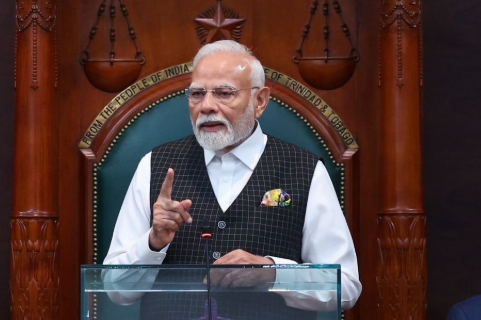
In a sharp and strategically significant statement, India’s Chief of Defence Staff (CDS) General Anil Chauhan recently raised serious concerns over the evolving geopolitical alliance between China, Pakistan, and Bangladesh. Speaking at a think tank event, the CDS did not mince words in highlighting what could potentially shape the subcontinent’s strategic landscape in the coming years.
At the heart of his statement was a stark fact: In the past five years, Pakistan has acquired almost 70 to 80% of its military weapons and equipment from China. This single data point reveals a dangerous depth of strategic dependence and military synergy between the two nations, which India cannot afford to ignore.
The China-Pakistan Military Partnership: More Than Just Trade
The CDS pointed out that the China-Pakistan axis is no longer limited to diplomatic support or military trade—it is transforming into a deeper alignment involving military, economic, and ideological coordination. He stressed that the extent of Chinese-origin weaponry in the Pakistani military now means that Pakistan’s bullets, missiles, and even tanks are increasingly "Made in China."
This military reliance is not without long-term consequences. When a country sources the bulk of its defense systems from a single supplier, it brings with it not just hardware but also service dependencies, maintenance obligations, and human presence. Chinese Original Equipment Manufacturers (OEMs), General Chauhan explained, have commercial liabilities they must fulfill, and that inevitably leads to Chinese personnel being present in Pakistan to ensure the equipment functions effectively. These include ex-servicemen, engineers, and civilian technicians embedded within Pakistani military logistics.
The Hidden Influence of Chinese Presence
CDS Chauhan cautioned that while such technical presence may appear commercial on the surface, it has broader implications. From satellite imagery provided by platforms like Maxar and Planet Labs to open-source intelligence, it is becoming evident that Chinese entities are actively operating in strategic capacities in Pakistan. While determining the full extent of Chinese state support in these efforts remains difficult, the pattern is clear: commercial activities often blur into intelligence and military assistance.
The CDS remarked that it is difficult to precisely define the transformation of information into intelligence unless backed by concrete evidence. However, he underlined that such layered involvement by China in Pakistan’s defense and infrastructure systems hints at a strategic convergence that extends far beyond arms sales.
No Unusual Northern Border Activity: A New Kind of Conflict?
Interestingly, General Chauhan noted that during the recent regional tensions, there was no unusual activity on India's northern borders—an anomaly compared to past conflicts where border skirmishes were common. He speculated this could indicate that current confrontations might be short-term or different in nature. This suggests a shift from traditional battlefield engagements to a broader strategic conflict involving psychological pressure, propaganda, and nuclear posturing.
Beyond the Battlefield: The Strategic Narrative War
The CDS’s remarks go beyond conventional defense analysis. His statement reflected a growing realization within India’s strategic community that the current rivalry is not just a military standoff—it is a narrative war. In this war, psychological influence, nuclear threats, and global perception-building are tools as vital as missiles and drones.
For decades, Pakistan’s nuclear strategy operated on a pattern: instigate low-level conflict or terror, then deter retaliation through nuclear threats. But as General Chauhan hinted, this paradigm is no longer effective. India is no longer the same country it was in 1962 or even 1999.
India in 2025: A Transformed Strategic Posture
India today is a vastly transformed power—technologically advanced, diplomatically assertive, and militarily prepared. Whether it is through the successful Chandrayaan space mission, the expansion of strategic ports like Chabahar, or the execution of precision operations like Surgical Strikes and Operation Sindoori, the nation is displaying capability and confidence on all fronts.
This evolution reflects a deeper change in India’s strategic thinking. India is no longer just reacting to provocations; it is anticipating, adapting, and asserting. The CDS’s remarks are not just a warning—they are a declaration of India’s new posture: vigilant, self-assured, and ready for any challenge.
General Anil Chauhan’s statement is far more than a policy comment—it is a mirror reflecting the mindset of a resurgent India. As China and Pakistan tighten their strategic embrace and even as Bangladesh's future position remains uncertain, India is watching—and more importantly, India is understanding. The world, too is watching how India responds, and so far, that response is rooted in strength, strategy, and sovereignty.
Disclaimer: This article is based on public remarks made by India's Chief of Defence Staff at a recent event and uses verified public information and reasonable analysis. The views expressed are reflective of strategic assessments and not intended to provoke or target any nation.




